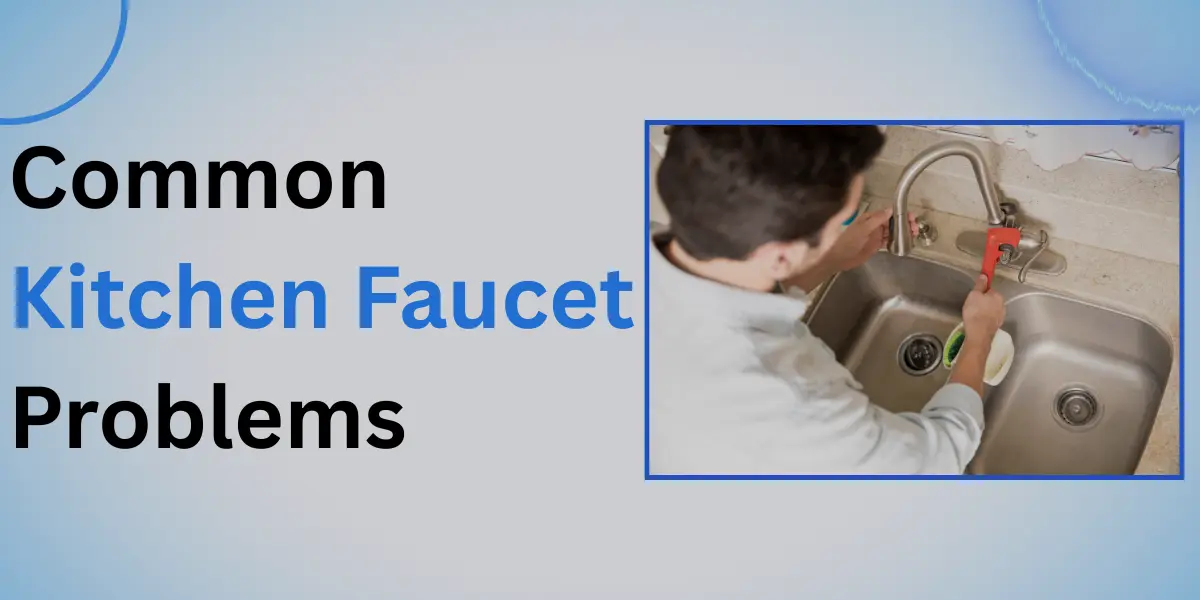Kitchen faucets work harder than most people think. Day after day, they handle cooking, cleaning, and endless rinsing. But eventually, issues creep in. From leaks to low water pressure, kitchen faucet problems are frustrating. Good news? Most can be solved at home with simple tools.
Understanding Every Common Kitchen Faucet Problem at Home
Kitchen faucet problems start small, a slow drip, reduced pressure, or a rust spot. Ignoring these signs turns a simple kitchen faucet problems into a costly repair. Regular cleaning, checking seals, and replacing worn washers early can save you from expensive replacements and wasted water down the line.
Let’s go through the most common kitchen faucet problems and what you can do.
1. Low Water Pressure:
One of the most troublesome kitchen faucet problems comes with low water pressure when water trickles instead of flowing. Usually, the aerator is clogged due to mineral buildup or debris.
Fix: Unscrew the aerator at the tip of the faucet. Clean it with vinegar. Rinse, then reattach. If pressure doesn’t improve, check the cartridge or supply lines.
2. Leaking Faucet
A constant drip is not just irritating; it wastes gallons of water. Worn washers or damaged O-rings are often to blame.
Fix: Shut off the water. Disassemble the handle. change the washer or O-ring. Reassemble carefully.
3. Loose Faucet Base:
Sometimes the faucet gets wiggly every time you turn it. This happens when the mounting nuts underneath loosen.
Fix: Use a basin wrench to tighten the nuts under the sink. If rust has deteriorated the parts, you may need replacement.
4. Sprayer Problems:
It happens when the diverter valve is faulty. It can be resolved by removing the diverter and replacing it with a new one. It’s usually inside the faucet body. If it’s just clogged, try cleaning it.
5. Faucet Handle Sticking:
Handles that are too stiff or hard to turn usually point to a buildup in the cartridge.
Fix: Remove the handle. Pull out the cartridge. Clean it or replace it with a new one. Lubrication helps too.
6. Corrosion and Rust
Over time, faucets start to develop stains and rust. This isn’t just unappealing, but it can also weaken the structure.
Fix: Clean it thoroughly with a vinegar solution or a mild cleaner. If damage is deep, buying a new a new one may be the only option.
7. Kitchen Faucet Removal Problems
Sometimes, you need a new kitchen faucet instead of repairing it. Old nuts rust, and tight spaces make work harder.
Fix: Spray penetrating oil on the nuts that are stuck. Use a basin wrench or socket wrench for a better hold. In extreme cases, cutting tools may be necessary.
FAQs
Q1: What is the lifespan of a kitchen faucet on average?
Most faucets last 10–15 years with regular maintenance.
Q2: How do I know if my Kitchen Faucet Diverter is bad?
If water pressure is low or the sprayer works but the main faucet doesn’t, or if you are hearing unusual noises, the diverter is likely faulty.
Q3: How to change Kitchen Tap O-rings?
Turn off the water. Remove handle and stem. Take out old O-rings and replace them with new ones of the same size.
Q4: Why is my kitchen faucet not working after using the sprayer?
The diverter got stuck or damaged. Cleaning or replacing it will bring back the normal flow.
Dealing with a kitchen faucet problems doesn’t always end with calling a plumber. From leaks to diverter failures, most fixes are DIY-friendly. A little patience, a wrench, and some spare parts can solve most issues.
And remember, if problems keep coming back, don’t waste time on endless repairs. Sometimes buying a faucet is the best idea.


